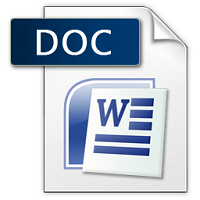₹198.00
Scroll down for Match your questions with Sample
Note- Students need to make Changes before uploading for Avoid similarity issue in turnitin.
Another Option
UNIQUE ASSIGNMENT
0-20% Similarity in turnitin
Price is 700 per assignment
Unique assignment buy via WhatsApp 8755555879
Description
| SESSION | AUG/SEP 2023 |
| PROGRAM | MASTER OF BUSINESS ADMINISTRATION (MBA) |
| SEMESTER | III |
| COURSE CODE & NAME | DOMS301 – ADVANCED PRODUCTION AND OPERATIONS MANAGEMENT |
Assignment Set – 1
- Narrate the activities of operations manager. 7
List the advantages of Porter’s value chain modeling. 3
Ans 1.
Narrate the activities of operations manager
Operations managers are pivotal in ensuring the smooth functioning and success of businesses. Their day-to-day activities encompass a wide range of responsibilities, tailored to maintaining the efficiency of an organization’s operations. They primarily oversee the production process, ensuring that products and services are delivered effectively and meet quality standards. This involves planning and controlling the manufacturing process, from sourcing raw Its Half solved only
Buy Complete from our online store
https://smuassignment.in/online-store/
MUJ Fully solved assignment available for session SEPT 2023.
Lowest price guarantee with quality.
Charges INR 198 only per assignment. For more information you can get via mail or Whats app also
Mail id is aapkieducation@gmail.com
Our website www.smuassignment.in
After mail, we will reply you instant or maximum
1 hour.
Otherwise you can also contact on our
whatsapp no 8791490301.
- What are the types of cash flows in an organization? List the factors affecting Financing Decisions.
Explain break-even analysis. Why do organizations conduct it? 5
Ans 2.
In an organization, cash flows can be categorized into three primary types: operating cash flows, investing cash flows, and financing cash flows.
- Operating Cash Flows: These are cash flows that are generated from the core business activities of the organization. They include revenue from selling goods and services, cash paid to suppliers and employees, and cash received from customers. Operating cash flows reflect the ability of the company to generate sufficient revenue to maintain and grow its
- Explain the factors to be considered while making plant location decisions. 10
Ans 3.
Making plant location decisions is a complex process that involves considering various factors to ensure the optimal operation, cost-effectiveness, and sustainability of the facility. Here’s an analysis of the key factors to consider:
- Proximity to Raw Materials: The location of a plant should be close to the source of raw materials
- Top of Form
Assignment Set – 2
- Explain the key elements of workforce performance management.
Explain with an example the product layout and mention its merits. 5
Ans 4.
Key elements of workforce performance management
Workforce performance management is a crucial aspect of organizational management, focusing on optimizing employee performance to achieve strategic goals. It encompasses several key elements:
- Goal Setting: Effective performance management begins with setting clear, measurable
- Explain unit load and system principles of material handling. 6
What are the types of waste JIT aims to reduce? 4
Ans 5.
Unit Load and System Principles in Material Handling
In the realm of material handling, the concepts of unit load and system principles are fundamental. A unit load refers to the assemblage of individual items or products into a single, larger, and more manageable unit. This aggregation can be achieved through containers, pallets, or crates, making the handling, storage, and transportation of goods more efficient and
- Explain briefly quality improvement approaches. 5
Discuss VEDinventory management technique. 3
How do you improve process reliability to prevent failure of a system? 2
Ans 6.
Quality improvement approaches, VED inventory management technique, and strategies to improve process reliability are critical concepts in business and operational management.
Quality Improvement Approaches
Quality improvement in any organization involves systematic activities that lead to measurable improvement in services, products, or processes. It’s based on various


